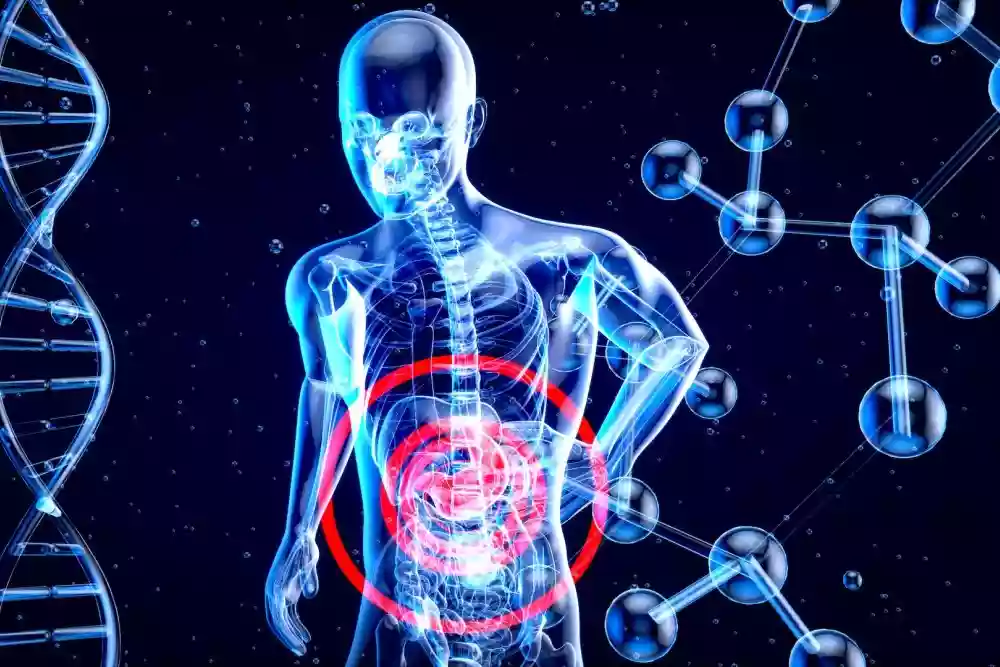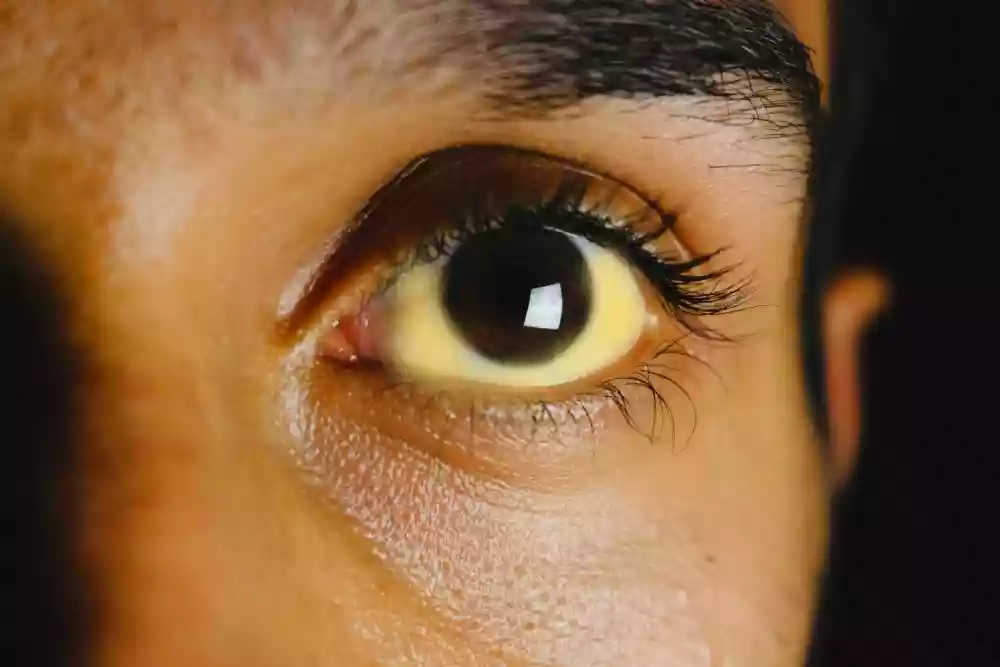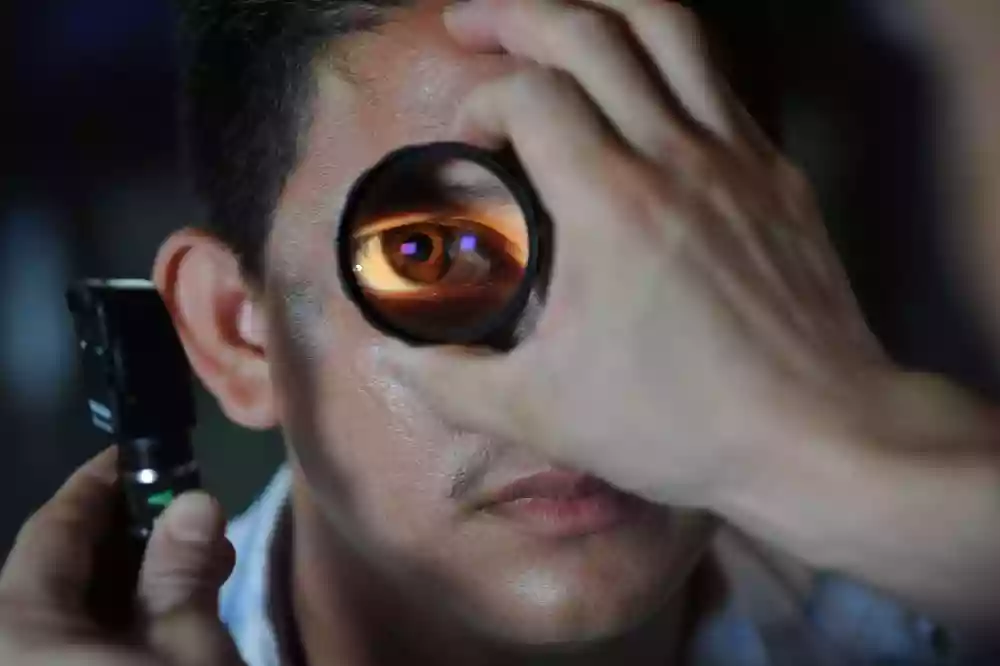Liver cancer, often referred to as a silent enemy, is a formidable disease that remains undetected until its advanced stages, making it challenging to treat effectively. The subtle onset of symptoms often masks its presence, leading to delayed diagnoses. Astonishingly, nearly 17 new liver cancer cases are diagnosed daily, underscoring the importance of symptom awareness for early spotting liver cancer. Dr. Romesh Angunawela, an esteemed ophthalmic surgeon and co-founder of OCL Vision, has drawn attention to a potential early warning sign of liver cancer that might be visible in our eyes.
In this article, we delve into the link between liver cancer and the eyes, exploring the role of jaundice as an indicator and emphasizing the significance of timely medical evaluation for better prognosis.
The Eyes: A Mirror of Our Health
Our eyes are intricate organs that not only facilitate vision but also provide vital clues about our overall health. They are often regarded as windows to our well-being, reflecting various underlying medical conditions. From cardiovascular diseases to diabetes, the eyes can reveal a wealth of information about our health status. Recently, medical researchers have delved into the connection between liver health and ocular manifestations. They uncovered intriguing links that could serve as early indicators of liver disease, including liver cancer.
The Subtle Onset of Liver Cancer
Liver cancer’s early stages are characterized by a lack of noticeable symptoms, making it difficult to diagnose. This latency period often masks the disease’s presence, allowing it to progress silently. It is during this time that proactive measures and heightened awareness become essential in identifying potential warning signs.
The Role of Jaundice in Liver Cancer

As liver cancer advances, liver failure may occur, leading to jaundice. Jaundice is a condition characterized by the yellowing of body tissues, including the skin and the whites of the eyes. In this context, Dr. Angunawela explains that the white part of the eyes can develop a yellow hue, with the intensity increasing as jaundice worsens. This observation aligns with a case study published in The Eurasian Journal of Medicine, which examined a female patient with liver cancer. The research team noted that jaundice was evident in approximately 19 to 40 percent of liver cancer patients.
Understanding the Mechanism Behind Jaundice
To comprehend how jaundice manifests in liver cancer, it is essential to grasp the vital functions of the liver. The liver plays a central role in filtering the blood and breaking down substances such as alcohol, drugs, and metabolic waste products. Additionally, it produces bile, a fluid that aids in the digestion of fats and carries away waste. When the liver starts to falter, bile can accumulate, leading to increased levels of bilirubin in the blood and tissues. This buildup of bilirubin causes the characteristic yellow pigmentation of tissues, including the skin and the whites of the eyes.
Importance of Timely Medical Evaluation
It is crucial not to overlook the significance of jaundice as an indicator of potential liver issues, including liver cancer. Although jaundice itself does not conclusively signify liver cancer, its presence warrants immediate medical attention. Early diagnosis plays a pivotal role in the successful management of liver cancer. It allows for more treatment options and a better prognosis.
When to Seek Medical Attention ?
If you notice any yellowing of the skin or the whites of your eyes, it is essential to contact your primary care physician promptly. Express your concerns and request a medical evaluation to determine the underlying cause. Remember that timely intervention can make a substantial difference in the course of liver cancer treatment.
New Research Unveils Promising Insights into Ocular Biomarkers for Liver Cancer
As medical science continues to advance, researchers are constantly striving to uncover new insights and potential biomarkers for early disease detection. Recent studies have shed light on the relationship between ocular manifestations and liver cancer, presenting exciting prospects for identifying the disease in its early stages.

These findings have prompted researchers to delve deeper into the ocular biomarkers associated with liver health, providing a promising avenue for improved diagnostics and patient outcomes.
The Quest for Early Detection: Ocular Biomarkers in Liver Cancer
Early detection remains a significant challenge in the fight against liver cancer. However, emerging research has shown promising results in identifying ocular biomarkers that may aid in the early diagnosis of this devastating disease. Ocular biomarkers are distinct characteristics observed in the eyes that can potentially reveal underlying health conditions. By honing in on these ocular indicators, researchers aim to develop non-invasive and cost-effective screening methods for liver cancer, particularly in high-risk populations.
A Promising Diagnostic Tool for Liver Cancer
A groundbreaking study conducted by a multidisciplinary research team has identified specific changes in the eyes’ microvasculature that are associated with liver cancer. Using advanced imaging techniques and cutting-edge technology, the researchers observed significant alterations in the blood vessels of patients with liver cancer. These changes were notably absent in healthy control subjects and individuals with non-cancerous liver conditions. The study’s findings indicate that assessing the eyes’ microvasculature could serve as a promising diagnostic tool for liver cancer, potentially providing an efficient and accessible screening method.
The Link Between Liver Cancer and Ocular Surface Changes

Moreover, recent investigations have focused on the potential link between liver cancer and ocular surface changes. The ocular surface, which includes the cornea, conjunctiva, and tear film, plays a vital role in maintaining eye health. Researchers have discovered distinct alterations in the ocular surface components in patients with liver cancer. These changes are thought to be associated with the systemic inflammation and oxidative stress often seen in liver disease. As a result, monitoring ocular surface changes could provide valuable insights into the progression of liver cancer and its management.
A Promising Step Forward in the Fight Against Liver Cancer
These emerging research findings offer hope for developing innovative strategies to detect liver cancer at an earlier stage, when treatment options are more varied, and patient outcomes are potentially improved. The integration of ocular biomarkers in routine screening protocols could revolutionize liver cancer diagnosis and management, ultimately leading to better patient care and survival rates. However, further large-scale studies and clinical trials are required to validate and establish the utility of these ocular biomarkers in clinical practice.
Nonetheless, the current research signals a promising step forward in the fight against liver cancer, bringing us one step closer to transforming the way we detect and combat this deadly disease.
Conclusion
Liver cancer remains a formidable foe, often concealing its presence until its advanced stages. However, through heightened symptom awareness, we can potentially detect this silent enemy earlier and improve the chances of successful treatment. Jaundice, characterized by the yellowing of the skin and the whites of the eyes, can serve as a crucial early warning sign of liver cancer.
Understanding the relationship between liver health and ocular manifestations can empower individuals to seek timely medical evaluation and take proactive steps toward better liver cancer management. Our eyes, as windows to our health, hold valuable insights that can guide us on the path to early detection and improved outcomes in the battle against liver cancer.

